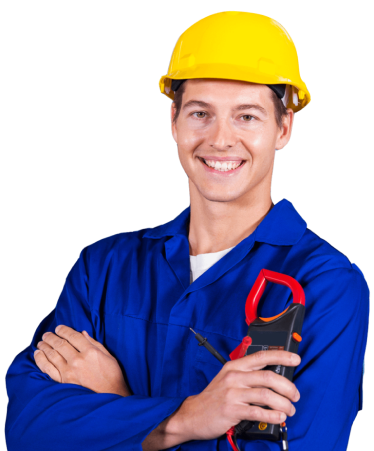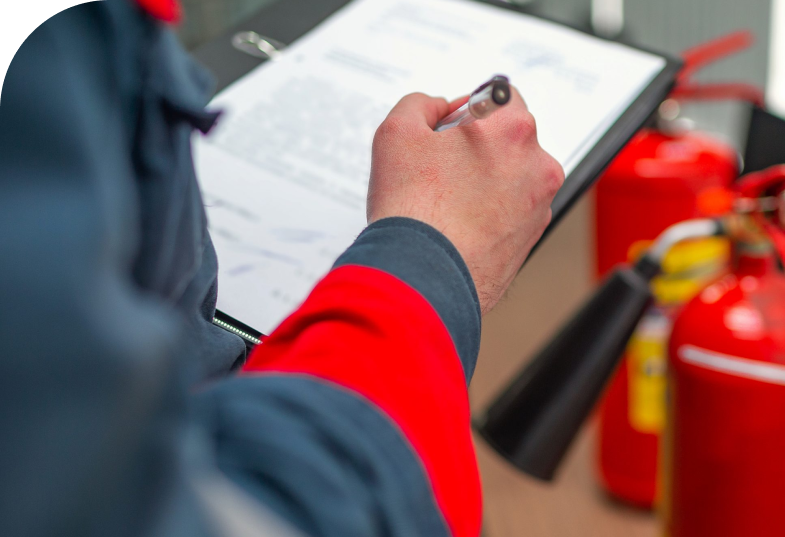Book a Service Now
Developing, implementing and reviewing occupational health and safety management plans
Developing OHS:
- Identifies workplace hazards (on a regular basis)
- Assesses risks to health and safety from those hazards
- Implements appropriate measures to control risks
- Monitors those controls regularly; and
- Provides feedback and information to managers and workers.
Therefore, you need to determine methods and safe work procedures for each of the above.
Establish a training program:
Workplace training needs to be tailored to the specific needs of your workplace.
Establish a training and induction program for new or transferring workers as well as systems for the ongoing training of current workers.
Training is essential to the creation and maintenance of a safety culture in your business. Managers and workers must have sufficient training to be involved in managing health and safety.
Establish a record and document management system:It is important to have a thorough record and document management system in place, and to ensure it is followed by everyone in your business. This will ensure that all policies, procedures, reviews, checks, inspections and audits are documented and all records are stored in a manner that permits easy retrieval.
Monitor your workplace for safety compliance:Ensure that the policies, procedures and practices are implemented consistently throughout your business, and are reviewed regularly to ensure they remain up-to-date, relevant and effective.
Remember, your safety management system must be able to adapt to changes to:
- work methods.
- systems and processes.
- substances.
- plant and equipment.
- And the workforce.
Identifying hazards and assessing and controlling risks in the workplace
There are three steps used to manage health and safety at work.
- Spot the Hazard (Hazard Identification)
- Assess the Risk (Risk Assessment)
- Make the Changes (Risk Control)
1.Spot the hazard
Examples of workplace hazards include:
- Faulty exit lights
- Electronics equipment is not properly tested and tagged.
- Fire equipment like fire blankets and fire extinguishers are not properly spotted.
2.Assess the risk
Assessing the risk means working out how likely it is that a hazard will harm someone and how serious the harm could be.
Whenever you spot a hazard, assess the risk by asking yourself two questions:
- how likely is it that the hazard could harm me or someone else?
- how badly could I or someone else be harmed?
Always tell someone (your employer, your supervisor, or your health and safety representative) about hazards you can’t fix yourself, especially if the hazard could cause serious harm to anyone.
For example:
- ask your supervisor for instructions and training before using equipment
- ask for help moving or lifting heavy objects
- tell your supervisor if you think a work practice could be dangerous
If you are not sure of the safest way to do something on work experience, always ask your work experience supervisor.
3.Make the changes
- Elimination:
- Substitution
- Isolation
- Safeguards
- Instructing workers in the safest way to do something
- Using personal protective equipment and clothing (PPE)
Sometimes hazards – equipment, substances, or work practices – can be avoided entirely. (e.g. Clean high windows from the ground with an extendable pole cleaner, rather than by climbing a ladder and risking a fall.)
Sometimes a less hazardous thing, substance, or work practice can be used. (e.g. Use non-toxic glue instead of toxic glue.)
Separate the hazard from people, by marking the hazardous area, fitting screens, or putting up safety barriers. (e.g. Welding screens can be used to isolate welding operations from other workers. Barriers and/or boundary lines can be used to separate areas where forklifts operate near pedestrians in the workplace.)
Safeguards can be added by modifying tools or equipment, or fitting guards to machinery. These must never be removed or disabled by workers using the equipment.
This means developing and enforcing safe work procedures. Students on work experience must be given information and instruction and must follow agreed procedures to ensure their safety.
If risks remain after the options have been tried, it may be necessary to use equipment such as safety glasses, gloves, helmets and ear muffs. PPE can protect you from hazards associated with jobs such as handling chemicals or working in a noisy environment.
Promoting ergonomic principles within the workplace such as matching furniture, equipment and work activities to the needs of employees
Managing the unique challenges found in workplace environment involves increasing your awareness of ergonomic challenges and following an improvement process.
Understand Office Ergonomics
NIOSH defines ergonomics as designing the workplace and tasks to fit the capabilities of the working population. It is a relentless pursuit and continuous effort to design the workplace for what people do well, and design against what people does not do well, thereby fitting the job to the person to enhance human performance. If people perform well, your company will perform well. If people perform poorly, long-term company success is difficult to achieve.
Understand Ergonomic Injuries
Ergonomic injuries don’t happen overnight. Musculoskeletal disorders (MSDs) are soft-tissue injuries of the muscles, nerves, tendons, ligaments, joints, cartilage, blood vessels or spinal discs, and result from gradual exposure over a long period to low-level harmful agents called risk factors. A brief exposure to these risk factors generally would not cause harm, but prolonged exposure to risk factors exceeding the body’s ability to heal can result in its reduced ability to function.
Identify Your Ergonomic Challenges
A simple, three-step process will help you identify and address ergonomic challenges at a workstation:
- Observe the office environment and tasks to identify potential ergonomic issues.
- Conduct formal ergonomic risk assessments to identify and document sources of risk.
- Find potential solutions. Once you’ve identified what needs fixing, you can adjust or change the workplace to reduce or eliminate exposures to the risk factors.
Set Up Your Workstation
Certified professional ergonomists developed the Four Points of Contact model to teach individuals to identify ergonomic issues and empower them to take action to adjust their own workstations. Whether you are using a traditional desk/chair workstation, or working on your laptop at an airport terminal, these four elements should be the focus.
The four elements include: eyes to the source; hands to input devices; feet to the floor; and the body to the chair.
Inspecting and auditing workplaces, processes, plant and physical hazards for legislative compliance
Australian Standard AS 4801 Occupational health and safety management systems – Specification with guidance for use provides that “The Organization shall establish, implement and maintain an audit program and procedures for periodic OHS management system (OHSMS) audits to be carried out by a competent person, in order to:
- Determine whether the OHSMS.
- Conforms to planned arrangements for OHS management including the requirements of the standard.
- Has been properly implemented and maintained.
- Is effective in meeting the organization’s policy as well as objectives and targets for continual OHS improvements.
- Provide information on the results of audits to management and employees.
The standard requires a WHS Audit Program to be established with a schedule based on the importance of the activity concerned and the results of the previous WHS audit.
WHS management systems audit has a much broader scope than a workplace inspection that usually involves checking physical conditions and arrangements for a work area, plant, process or an item in the workplace. The WHS management systems audit involves examining the organization’s OHS/WHS policy, plan and programs and determining how well they have been implemented. During the audit, documents, records and work practices are reviewed. System strengths and areas for improvement are then identified.
Why need to do the WHS audits?
The WHS Audit compares what is intended to be in place as established and what is actually in place and suitability of what is in place.
Types of safety audits?
The WHS Audit for an organization may include one or more of the following types of audits:
- Desktop audits (review of existing documentation)
- Gap analysis against standards (eg. AS/NZ4801, OHSAS18001) or other established requirements
- Compliance audits (auditing system elements, policies, procedures, processes, premises, plant & equipment against legislative requirements, codes and standards)
- Systems audit
- Process audit
- WHS Management Plan Audit
- OHSMS certification
- Self Insurer audit
- Other industry specific audit schemes:
- Federal Safety Commissioner (FSC) Audit Criteria
- NSW Government – Work health and safety management systems and auditing guidelines.
How should the WHS audit be done by the auditor?
The WHS management system auditor should be independent of the process being audited. Auditors may be internal or external to the organization that should perform the audit competently, objectively and impartially.
Training employees in personal protective equipment and safe working procedures
The need to use PPE shall be determined from the process of hazard identification, risk assessment and development of risk control measures.
PPE shall conform to any legislative, Australian Standard and / or industry standard requirements or guidelines.
Where possible, PPE should be purchased from suppliers on the standing offer arrangement (SOA) list. Where required, suppliers of PPE should be asked to provide and include the following services:
- Advice on PP
- Information relating to performance testing results
- Advice on personal fitting, use, cleaning, maintenance, and storage of PPE
- A range of sizes (where appropriate)
- Information on the availability and need for replacement parts
- Demonstration of the PPE
- Immediate replacement of any defective PPE.
Specific PPE may be required to be worn under particular circumstances. This may include but is not limited to:
Head protection in the form of a safety helmet shall be worn where there is a possibility that a person:
- may be struck on the head by a falling object
- the person may strike their head against a fixed object
- is likely to have inadvertent head contact with an electrical hazard.
Full body protection where there is a risk of dermal exposure to specific infection agents or hazardous chemicals.
Eye protection/face shield where a risk of eye injury exists. Typical hazards might include flying particles, dust, splashing substances, harmful gases, vapors, aerosols, and high intensity radiation.
Hearing protection where a risk of noise-induced hearing loss exists. The need for hearing protection shall be assessed from the conduct of noise monitoring surveys in potential noise hazard areas.
Respiratory protection where all other practicable measures have been taken to provide control measures to ensure that no staff member is exposed to an atmosphere that is or may be injurious to health.
Protective clothing and sunscreen for workers who work outdoors and are exposed to the sun’s rays for continuous periods. Direct exposure of the skin to UV radiation from outdoor work shall be minimized by providing hats, long sleeves / trousers and an adequate supply of sunscreen.
Hand protection where there is an identified hazard with a potential for hand injury, transmission of infection or absorption of substances via the skin.
Protective footwear (safety footwear) shall be provided where the nature of the work exposes the employee to a medium to high risk of injury to feet (for example. occupations such as workshop maintenance and gardening staff).
High visibility safety vests where there is a risk of injury associated with working on or near roadways, near moving traffic or plant or other circumstances where high visibility of the worker is required.
Book a Service now
BOOK NOW



